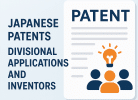Japan’s Intellectual Property Strategy Headquarters (IPSH) held its 22nd meeting on April 21 with the purpose of mapping out a five-year National Intellectual Property Strategy program. The IPSH was created in 2003 by then Prime Minister Jun’ichiro Koizumi, an advocate of introducing a stronger patent system in Japan to help the country to become an “IP-based nation.” The Committee was created to revamp the country’s strategic program for the “creation, protection and exploitation of OP” in Japan.
However, at the April meeting, members of the committee laid out a number of reasons’ for Japan’s failing IP strategy. Members of the Committee concluded that, in order to truly become an IP leader, Japan must shift its emphasis from IP protection to IP exploitation. This recommendation was made on the basis of a recent analysis of the relationship between patents and economic growth in Japan.
(1) Although Japan continues to top the world in annual patent applications filed, the rate of patent contribution to the economy was one-fourth that of the U.S. and one-half that of the UK and France in 2008. According to some estimates, over 70% of patents registered in Japan have never been used.
(2) The gap between the economic contributions of Japanese research institutions to those abroad is even more revealing. Although the number of patents obtained by Japanese universities grew by 12% in the past 5 years, profits remain low; according to Yomiuri Shinbun, the profits from these patents amounted to one-eightieth of what American universities were able to realize from their patents last year. Japanese universities also under-performed relative to their U.S. and European counterparts in terms of the rate of industry-academia collaborations.
(3) The content industry has also seen their sales plateau. Their sales in 2007 rose a mere 4.5% since 2003. In particular, the popular anime industry saw a decline in sales from the previous year.
In view of these trends, the IPSH will evaluate the state of patent utilization in Japan by analyzing the utilization rate of IPR and reevaluating whether there are any systematic inefficiencies that can be remedied.
(Posted May 12, 2009)






